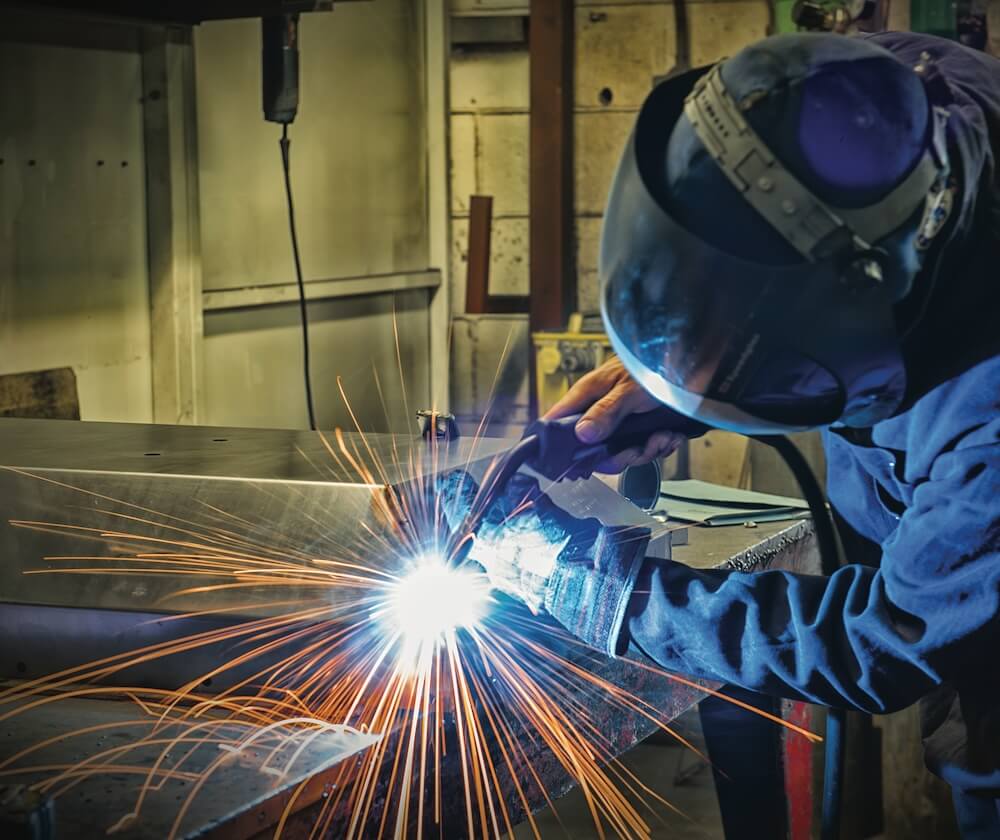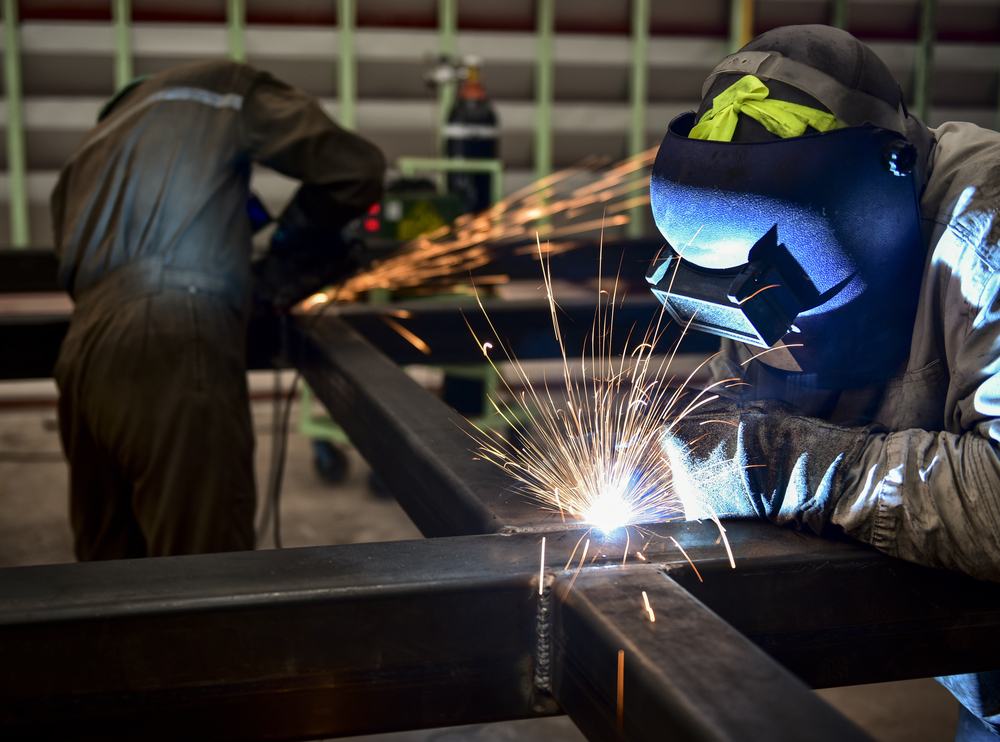All Concerning Welding: Trick Insights Into Techniques and Best Practices for Success
Welding incorporates a selection of methods, each fit for specific materials and applications. Understanding these methods, such as GMAW, SMAW, and TIG, is necessary for attaining excellent outcomes. Moreover, the right devices and security practices can not be forgotten. As prep work and troubleshooting play vital functions in the welding process, understanding these aspects can substantially improve the quality of the last item. What are the essential factors that assure an effective weld?
Comprehending Various Welding Methods
Welding methods incorporate a selection of methods, each suited to specific applications and materials. Among one of the most typical methods are Gas Steel Arc Welding (GMAW), Shielded Metal Arc Welding (SMAW), and Tungsten Inert Gas Welding (TIG) GMAW, also called MIG welding, is popular for its rate and flexibility, making it suitable for thin products. SMAW, or stick welding, is favored for its simpleness and effectiveness in exterior atmospheres, especially with thicker steels. TIG welding offers accuracy and control, making it suitable for complex work and non-ferrous steels (Montana Mobile Welding and Repair Belgrade Welding). Each method has its unique benefits and considerations, enabling welders to pick the very best approach based upon the project's demands, material kind, and desired results. Understanding these methods is essential for successful welding
Necessary Welding Equipment and Tools
While different welding strategies require particular abilities, the appropriate equipment and tools are just as vital for achieving quality results. Important welding tools consists of welding devices, which vary relying on the strategy-- such as MIG, TIG, or stick welding. Safety equipment, consisting of aprons, safety helmets, and gloves, assurances security and comfort during the process. Additionally, components and clamps aid safeguard products in area, guaranteeing accuracy in welds. Consumables like welding poles, cord, and securing gas are additionally essential elements that affect the top quality of the weld. In addition, devices such as cutters and grinders facilitate surface area preparation and post-weld finishing, adding to a specialist end result. Buying high-quality tools inevitably enhances the performance and performance of welding tasks.
Safety Practices in Welding
Proper security methods are crucial in the welding market to protect workers from possible risks. Welders should put on appropriate individual protective equipment (PPE), including safety helmets with correct shading, handwear covers, and flame-resistant apparel. Adequate air flow is crucial to decrease exposure to damaging fumes and gases generated during the welding process. In addition, employees need to be trained in the correct handling of welding equipment to avoid mishaps. Fire precaution, such as maintaining combustible products far from the welding area and having fire extinguishers conveniently available, are needed. Regular examinations of equipment and work spaces can assist identify prospective dangers prior to they result in crashes. By sticking to these safety methods, welders can produce a more secure working environment and reduce dangers linked with their trade.
Preparing Products for Welding
Preparing products for welding is an important action that greatly influences the high quality and stability of the last product (Montana Mobile Welding and Repair Welding). Appropriate preparation involves cleansing the surface areas to remove pollutants such as rust, oil, and dirt, which can compromise the weld. Methods such as grinding, fining sand, or making use of solvents are typically used to accomplish a tidy surface area. In addition, ensuring that the materials fit together snugly is vital; spaces can cause weak welds. It's also crucial to think about the positioning and positioning of the components, as this will affect the simplicity of welding and the last result. Selecting the appropriate filler material and making sure compatibility with the base metals is vital for attaining strong, sturdy welds.
Tips for Achieving High-Quality Welds
Achieving top notch welds requires attention to detail and adherence to finest practices throughout the welding process. Proper joint prep work is vital, guaranteeing surface areas are complimentary and tidy from contaminants. Picking the appropriate filler material and welding strategy based on the base metals is important for perfect bonding. Keeping regular travel rate and angle while welding can protect against issues and promote uniformity. In addition, managing warm input is necessary; excessive warm can bring about warping and deteriorated joints. Regularly evaluating the welds throughout the procedure enables for prompt changes if necessary. Utilizing proper post-weld therapies, such as cleansing and anxiety relief, can boost the sturdiness and stability of the weld, eventually making sure an effective result.
Troubleshooting Common Welding Issues
Welding usually offers obstacles that can influence the quality and honesty of the end product. Typical concerns such as porosity, inconsistent weld beads, and getting too hot can develop, each requiring particular fixing strategies. Recognizing these issues is important for welders to enhance their skills and accomplish perfect outcomes.
Porosity Issues Discussed
Although porosity can typically be neglected, it continues to be an essential problem in welding that can compromise the stability of a finished item. Porosity refers to the presence of little gas pockets within the weld bead, which can weaken the joint and lead to premature failure. This problem generally occurs from impurities, dampness, or inappropriate shielding gas protection during the welding procedure. To mitigate porosity, welders should validate that the base products are dry and clean, utilize appropriate securing gases, and keep regular welding specifications. Routinely evaluating the devices and environment can likewise aid identify potential problems prior to they show up in the weld. Dealing with porosity properly is necessary for achieving strong, sturdy welds that satisfy high quality standards.

Irregular Weld Beans
Irregular weld beads can significantly affect the quality and toughness of an ended up item. Different aspects add to this concern, including incorrect traveling speed, wrong amperage setups, and inconsistent electrode angles. When the welder relocates also promptly, a bead might show up slim and lack penetration, while moving also slowly can cause excessive accumulation. In addition, making use of the incorrect amperage can cause either damaging or too much spatter, both of which compromise weld stability. The welder's method, such as irregular torch activity, can likewise lead to irregular bead appearance. To mitigate these troubles, welders ought to concentrate next on keeping stable, regulated movements and ensuring appropriate equipment settings to attain uniformity in their welds. Uniformity is essential to achieving solid and trustworthy welds.
Overheating and Bending Issues
Extreme warmth throughout the welding procedure can cause substantial overheating and deforming issues, influencing the structural stability of the workpiece. These issues usually materialize as distortion, which can compromise positioning and fit-up, making further setting Web Site up challenging. Variables adding to overheating consist of the option of welding criteria, such as voltage and travel speed, in addition to the kind of product being welded. To alleviate these concerns, welders should preserve constant travel speed and proper warmth input while keeping track of the workpiece temperature level. In addition, preheating or post-weld warm treatment can assist alleviate tensions brought on by rapid cooling - Welding. Normal assessment and adherence to finest techniques are crucial in preventing overheating and guaranteeing the long life and reliability of welded frameworks
Frequently Asked Concerns
What Are the Career Opportunities in the Welding Market?
The welding sector uses varied career opportunities, including placements as welders, designers, inspectors, and teachers. Professionals can function in production, construction, aerospace, and automotive markets, gaining from strong need and competitive incomes in different roles.
Just How Can I Enhance My Welding Rate Without Compromising Quality?
To enhance welding speed without giving up high quality, one ought to practice reliable methods, preserve devices, enhance settings, and improve hand-eye coordination. Normal training and looking for feedback can additionally greatly add to achieving much faster, top quality welds.
What Certifications Are Readily Available for Welders?
Numerous accreditations exist for welders, including those from the American Welding Culture (AWS), the National Center for Construction Education And Learning and Research Study (NCCER), and various industry-specific organizations. These qualifications improve employability and show skill proficiency.
Just How Does Welding Affect the Characteristics of Metals?
Welding influences the homes of metals by modifying their microstructure, which can bring about changes in toughness, solidity, and ductility. Heat input and cooling prices throughout the procedure greatly affect these material features.
Can I Bonded Dissimilar Metals With Each Other?
